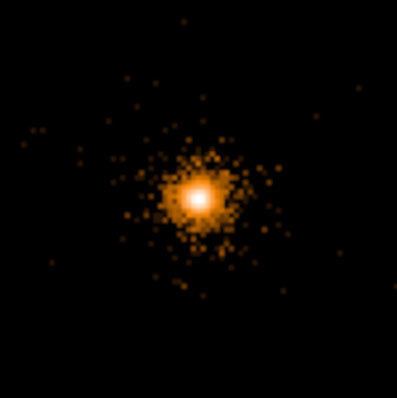Magnitude 3.23 Apparent magnitude (V) 3.23 | ||
 | ||
Similar Gamma Cephei, Alpha Cephei, VV Cephei, Delta Cephei, Gamma Pegasi | ||
Beta Cephei (β Cephei, abbreviated Beta Cep, β Cep), also named Alfirk, is a third magnitude star in the constellation of Cepheus. It is the prototype of the Beta Cephei variable stars.
Contents
Nomenclature
β Cephei (Latinised to Beta Cephei) is the star's Bayer designation.
It bore the traditional name Alfirk, derived from the Arabic الفرقة al-firqah "the flock" (of sheep). This star, along with Alpha Cephei (Alderamin) and Eta Cephei (Alkidr), were Al Kawākib al Firḳ الكوكب الفرق "the stars of the flock" by Ulug Beg. In 2016, the International Astronomical Union organized a Working Group on Star Names (WGSN) to catalogue and standardize proper names for stars. The WGSN approved the name Alfirk for this star on 21 August 2016 and it is now so entered in the IAU Catalog of Star Names.
Visibility
Like the star Epsilon Draconis in the constellation of Draco, Alfirk is visible primarily in the northern hemisphere, given its extreme northern declination of 70 degrees and 34 minutes. The star is nevertheless visible to most observers throughout the world reaching as far south as cities like Harare in Zimbabwe, Santa Cruz de la Sierra in Bolivia or other settlements north ± 19° South latitude. The star is circumpolar throughout all of Europe, northern Asia, and North American cities as far south as Guadalajara in west central Mexico. All other locations around the globe having a latitude greater than ± 20° North will notice that the star is always visible in the night sky. Because Beta Cephei is a faint third magnitude star, it may be difficult to identify in most light polluted cities, though in rural locations the star should be easily observable.
Properties
β Cephei is a triple star comprising a spectroscopic binary with a magnitude 8 optical companion. Its magnitude varies between +3.16 and +3.27 with a period of 0.19048 days.
β Cephei A is a blue giant star with a stellar classification of B1 IV. It has previously been classified with either a main sequence or giant luminosity class. This star has a radius that has been estimated at 6 R☉ and a mass of 12 M☉. Like most high-mass B-class stars, β Cep is a relatively young star with an estimated age of just a few million years. Like the majority of giant stars, β Cephei A rotates slowly on its axis with a rotational velocity of 7 deg/day, a speed which takes the star approximately 51 days to make one complete revolution.
β Cephei B is a Be star in an 85-year orbit with the giant primary. It has been resolved using speckle interferometry at a distance of 0.25" in 1972.
β Cephei C is a magnitude 7.8 A2 main sequence star 13.6" distant.
Variability
β Cephei pulsates regularly every 4 hours 34 minutes, producing a variation in its visual brightness of 0.11 magnitudes. It is the prototype of the β Cephei class of variables, hot main sequence and giant stars that pulsate analogously to Cepheid variables but with the pulsations driven by iron opacity rather than by helium.
